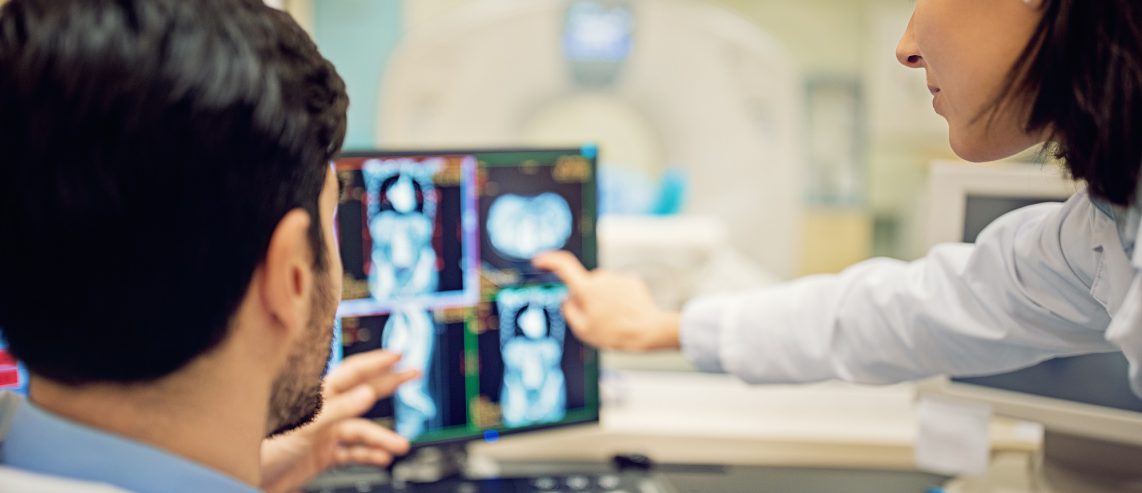According to the American Cancer Society, 1 in 8 men will develop prostate cancer during their lifetime.
People who have been diagnosed with prostate cancer can undergo several different courses of treatment. One option is brachytherapy. There are two forms of prostate brachytherapy: low dose rate (LDR) and high dose rate (HDR). LDR brachytherapy also is referred to as prostate seed implantation or internal radiation therapy.
What Is Brachytherapy?
LDR brachytherapy or prostate seed implantation is a type of radiation therapy used to treat prostate cancer.
As the name implies, it involves radioactive “seeds” about the size of a grain of rice that are permanently implanted into the prostate gland using ultrasound guidance.
The number of seeds and their placement are determined by your care team in a specialized treatment plan. These seeds are placed permanently and slowly release radiation internally over several months.
HDR brachytherapy also is used to treat prostate cancer. It involves a temporary placement of a radioactive source in the prostate one to two times and then the radioactive source is removed.
Never Miss a Beat!
Subscribe to Our HealthBeat Newsletter!
Thank you for subscribing!
You can now select the specific newsletters you'd like to receive.
You are already subscribed.
Subscribe to more newsletters in our email preference center.
Sorry, an error occurred. Please try again later.
Get Healthy Tips Sent to Your Phone!
What Are the Benefits of Brachytherapy?
Prostate brachytherapy is a less-invasive way to target high doses of radiation to small areas.
Implanted as a convenient, same-day procedure, prostate brachytherapy helps to avoid the frequency of appointments that accompany external radiation therapy.
In addition, it spreads less radiation to surrounding organs and targets cancer cells while maximizing the preservation of healthy tissue.
For early-stage prostate cancer, you will usually have one treatment of LDR brachytherapy. If a temporary or HDR brachytherapy is used, you will usually have two treatments either on the same day or on another day. If brachytherapy is being used after external radiation therapy, you will usually only need one treatment.
What Are the Side Effects of Prostate Cancer Brachytherapy?
Urinary symptoms are the most common side effect, including frequent urination and sometimes a burning sensation with urination.
Incontinence or loss of bladder function is almost never a problem after brachytherapy unless you can’t get to a bathroom quickly enough when the urge strikes.
Other side effects of brachytherapy for prostate cancer could include changes in bowel movements and diarrhea and, even less common, bleeding.
These side effects lessen over time as the radiation becomes inactive. After the LDR procedure, it is advised that patients avoid having anyone sit on their lap for about a month due to the concentration of radiation. HDR brachytherapy does not have any limitations.
Who Is a Good Candidate for LDR or HDR Brachytherapy?
All prostate cancer patients may be candidates for brachytherapy treatment. Men with low, intermediate, or high levels of metastasizing or spreading to another part of the body are all eligible.
However, this treatment also is a good option for patients with intermediate-risk or high-risk prostate cancer.
How Long Does Radioactivity from Brachytherapy Last in the Body?
For LDR brachytherapy, it depends upon the type of radioactive seed your physician uses. The radioactivity of some seeds will completely decay in one to two months; others last about one year. The seeds remain safely in place for the rest of the patient’s life.
For HDR Brachytherapy, the radioactivity is gone immediately after the radioactive source is removed from the prostate during the procedure. There is no permanent implant left behind with HDR Brachytherapy.
Prostate cancer brachytherapy seeds deliver a high dose of radiation directly to the prostate gland and sometimes to the seminal vesicles. The seeds release radiation slowly over several months.
What is the Success Rate of Prostate Brachytherapy?
Brachytherapy is considered an effective option for the treatment of prostate cancer.
Although the dosage and treatment intervals may vary, prostate cancer-free survival is consistently high.
Prostate seed implantation is a long-standing treatment for prostate cancer, and it is available throughout the UPMC network to provide the best range of treatment options for prostate cancer patients.
About UPMC Hillman Cancer Center
When you are facing cancer, you need the best care possible. UPMC Hillman Cancer Center provides world-class cancer care, from diagnosis to treatment, to help you in your cancer battle. We are the only comprehensive cancer center in our region, as designated by the National Cancer Institute. We have more than 70 locations throughout Pennsylvania, Ohio, and New York, with more than 200 oncologists – making it easier for you to find world-class care close to home. Our internationally renowned research team is striving to find new advances in prevention, detection, and treatment. Most of all, we are here for you. Our patient-first approach aims to provide you and your loved ones the care and support you need. To find a provider near you, visit our website.
